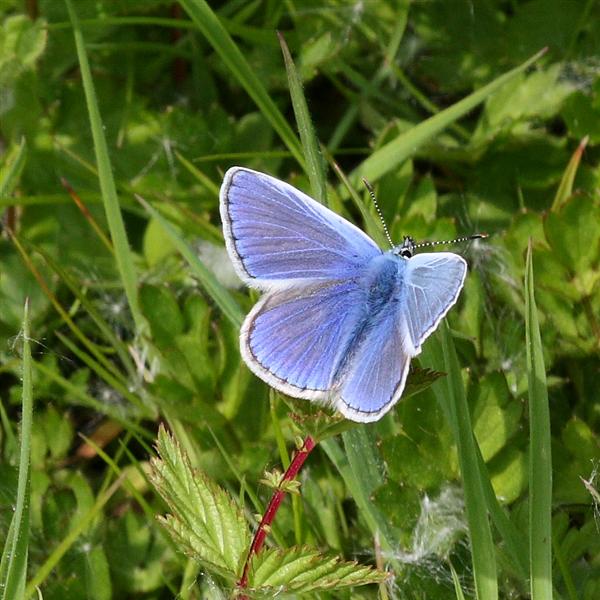I am fortunate to have many different habitats to visit within a reasonable driving distance of home and late spring into summer is an excellent time to wander around a lowland heath such as Thursley Common comprising a mixture of dry and wet heath, bog, woodland and scrub.
Heathlands are very rare habitats and occur in areas which combine poor soils with a cool, moist climate. In Europe, lowland heathland occurs mainly in a zone bordering the Atlantic and North Sea, where there is a cool moist oceanic climate with mild winters and cool summers. The UK has approximately 20% of Europe's remaining lowland heath. Most of this is concentrated in the southern and eastern counties of Cornwall, Devon, Dorset, Hampshire, Sussex, Suffolk, Norfolk and my home county of Surrey.
Heaths are wide open landscapes dominated by plants such as Heathers, Gorse and heathland grasses and punctuated by scattered trees such as Silver Birch and Pines. They are historic landscapes and are essentially a man-made habitat. Gradual clearance of native woodland for planting crops began in Neolithic times and continued into the 17th century. Once the soil nutrients were exhausted people moved on to cultivate a new areas. Continued grazing and other activities have helped to maintain the open nature of these heaths. The soils are usually sandy (and therefore free-draining), acidic and very low in plant nutrients so a unique association of plants and animals have adapted to withstand such inhospitable conditions and evolved to form the distinctive heathland community including approximately 5,000 species of invertebrates.
Numerous wide sandy tracks criss-cross the common and I often pass the time of day with horse riders who gently walk by but on this occasion the exercise was far to quick for my legs! There are various stands of pines with evidence of recent thining lying on the ground. There are also small pockets of deciduous woodland to search out diffent species and I watched a female Redstart bringing food to her youngsters but no postable pics this time.
A female Great Spotted Woodpecker (Dendrocopos major) [the male has red patch on back of its head] was busily feeding its young at the nest hole.
Dry heath is normally dominated by varying proportions of Heather (Calluna vulgaris), Bell Heather (Erica cinerea) and Gorse (Common, plus Western or Dwarf). Wet heath is characterized by the presence of Cross-leaved Heath (Erica tetralix), Purple Moor Grass (Molinia caerulea), species of Sphagnum moss and the Marsh Orchid.
An unexpected find was this female Northern Wheatear (Oenanthe oenanthe) quietly perched on a pile of logs and I was able to get quite close without upsetting her.
Three Red Data Book species of birds are particularly associated with Surrey heathlands; Nightjars (Caprimulgus europaeus), Woodlarks (Lullula arborea) and Dartford Warblers (Sylvia undata). Dartford Warblers are the only ones exclusively associated with this habitat in southern England but their numbers appear to have severely crashed in recent years...the devasting fire in 2006 that wiped out vast tracts of their preferred habitat certainly hasn't helped and I have not seen any during recent visits to Thursley Common. Nightjars are summer visitors to England, whose characteristic churring noise can be heard on warm, summer evenings so I'll be returning very soon to enjoy this experience. FAB.
























































